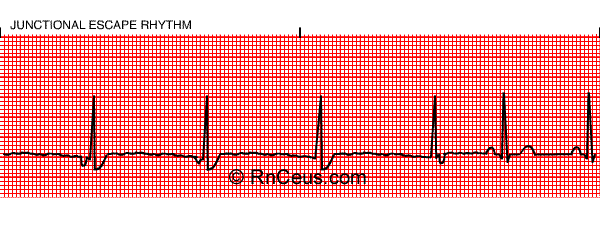

It is an escape mechanism, which produces a narrow QRS complex, with a rate of 40 to 60 beats per minute, contrary to the normal and expected 60 to 100 beats per minute that you will see when the SA node is working correctly.Īn accelerated junctional rhythm, in which the rate is higher than 60 beats per minute, is a narrow complex rhythm that often takes over from a clinically bradycardic sinus node pace. It has intrinsic automaticity that makes it possible to initiate and depolarize the myocardium for the period of significant sinus bradycardia or total heart block. If a junctional rhythm occurs, the heart's atrioventricular node starts acting as a pacemaker instead, taking over from the sinoatrial node. This sinus pace is vital for the reason that it guarantees that the heart's atria reliably contract before the ventricles. A current then passes from the atria through the AV node, also known as atrioventricular node, from which it moves along Purkinje fibers to arrive at and depolarize the ventricles.

The electrical activity of sinus pace starts in the sinoatrial node and depolarizes the atria. Causes of this failure vary but most commonly, there is a block in electrical conduction somewhere along the pathway that starts from heart’s sinoatrial node end ends in the ventricles. In patients who have a junctional rhythm, the sinoatrial node does not control the pace at which heart beats. The sinoatrial node is the heart’s natural pacemaker. When the heart is functioning properly, the heart's sinoatrial node establishes the rate by which the heart beats.

A junctional rhythm is an abnormal heart rhythm that can be seen as a "backup" protective system or a fail-safe.


 0 kommentar(er)
0 kommentar(er)
